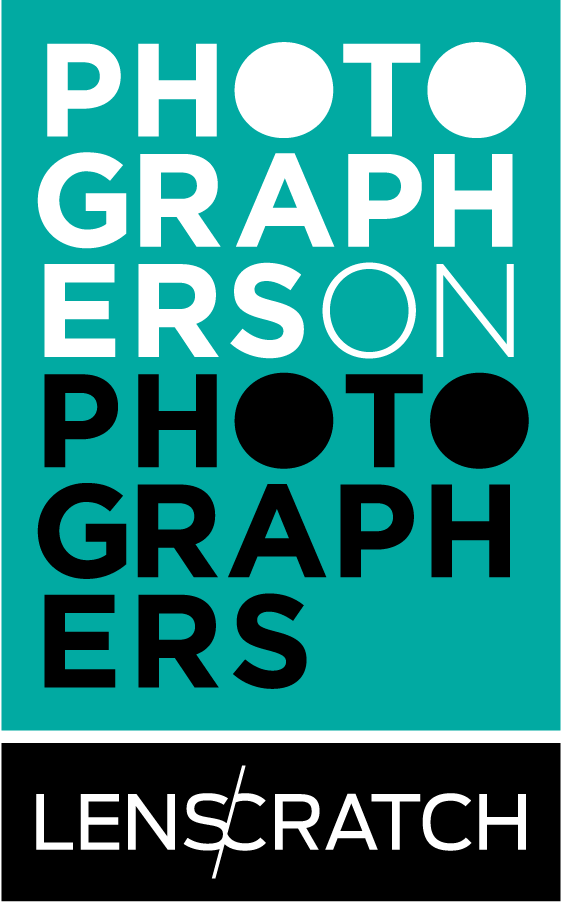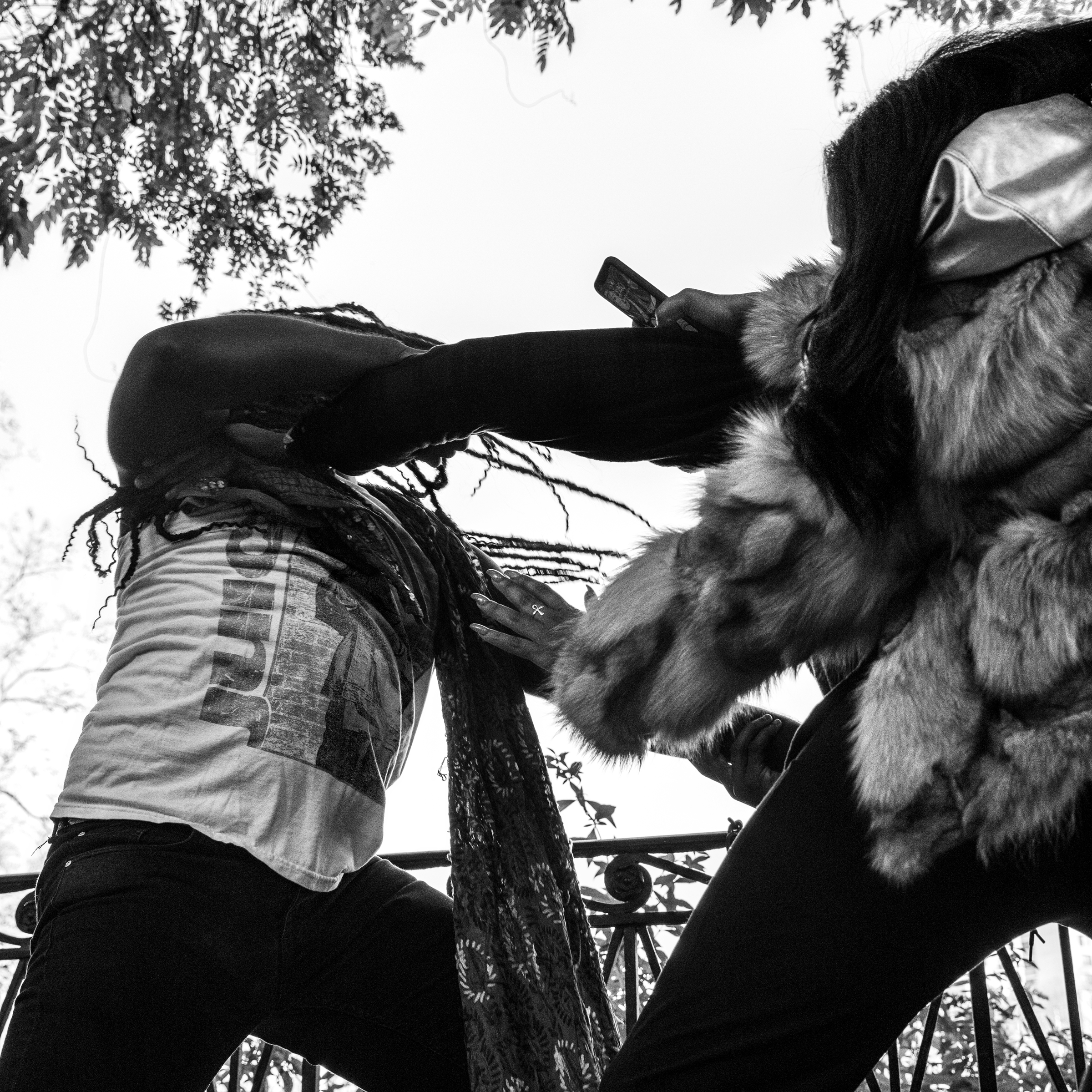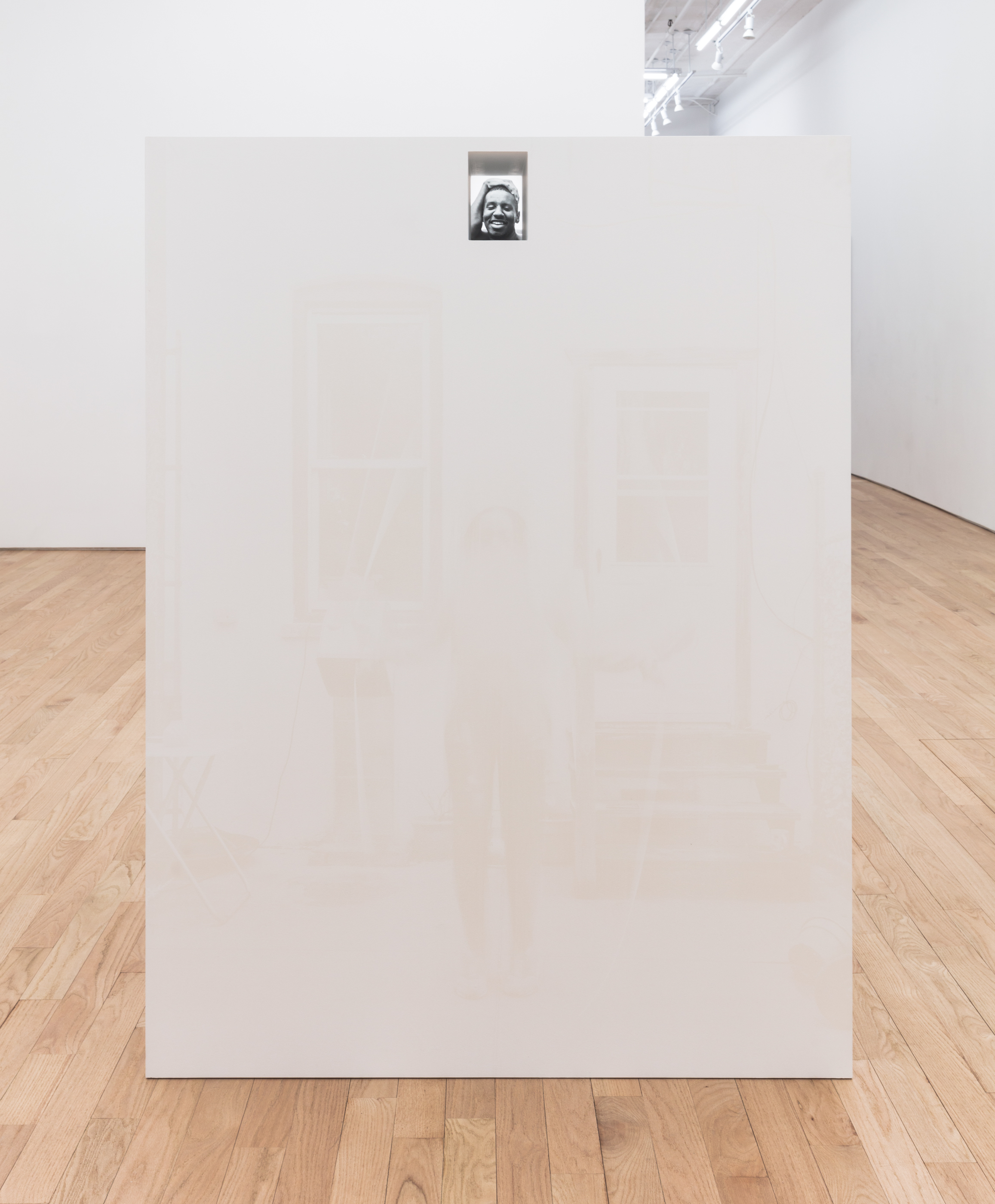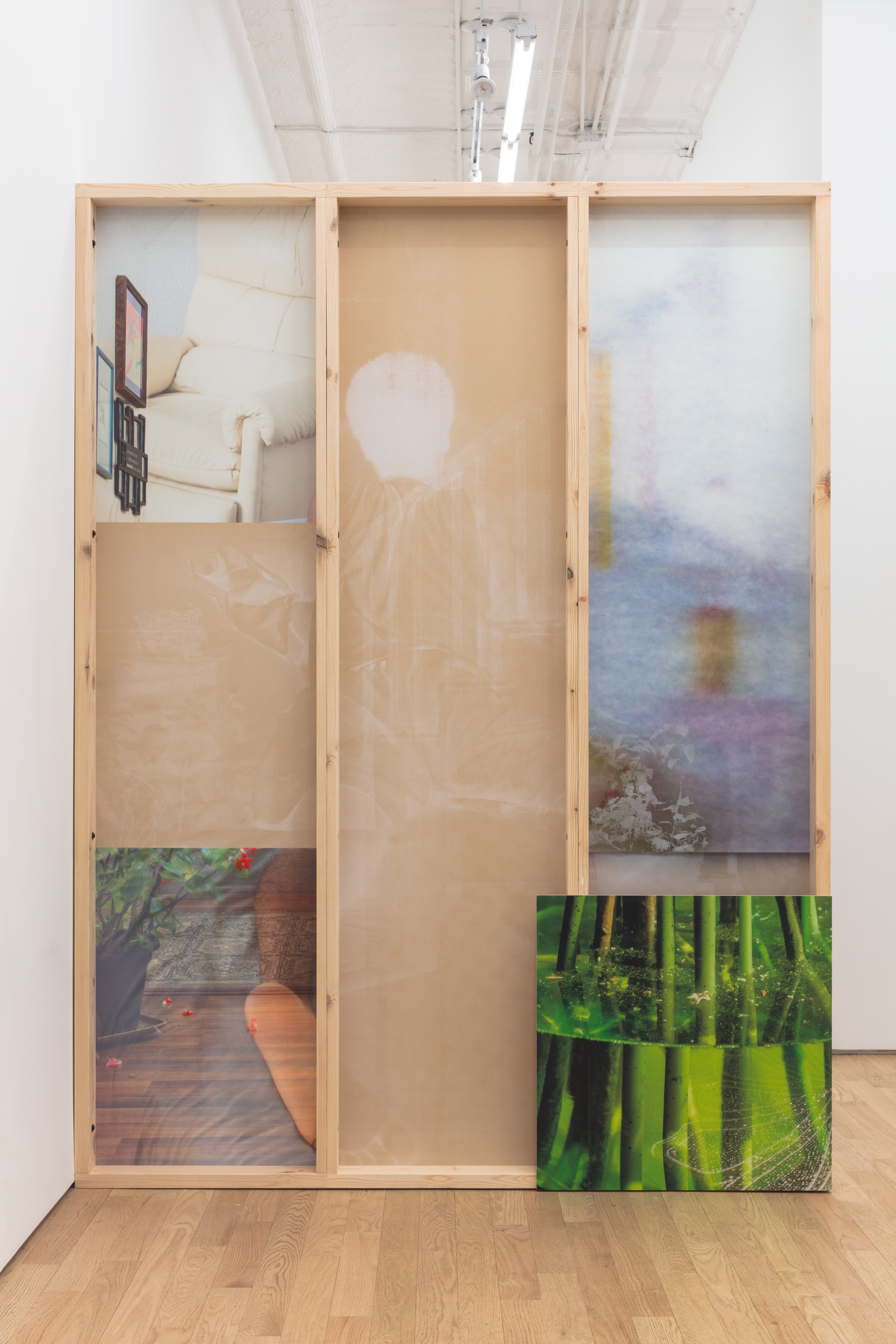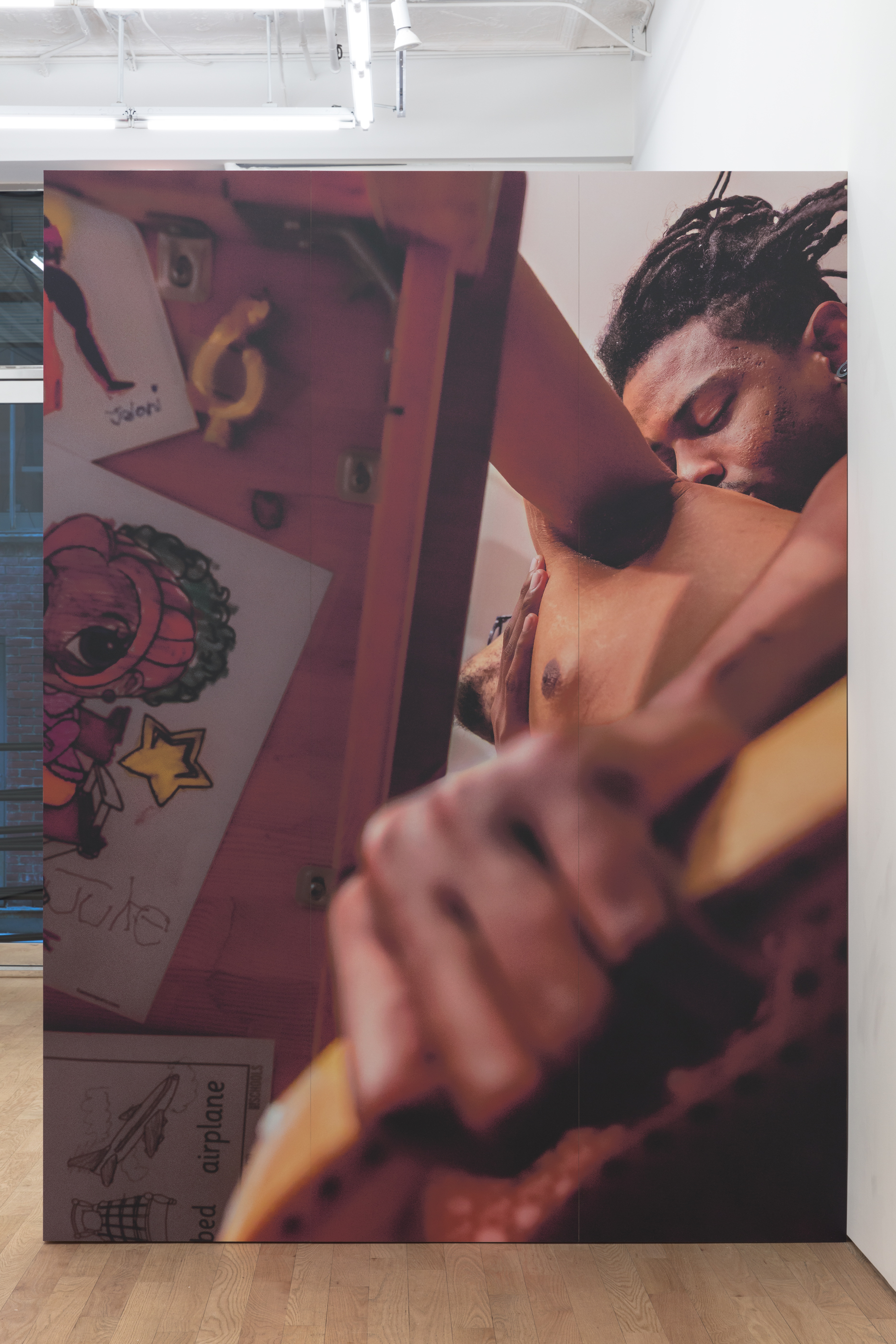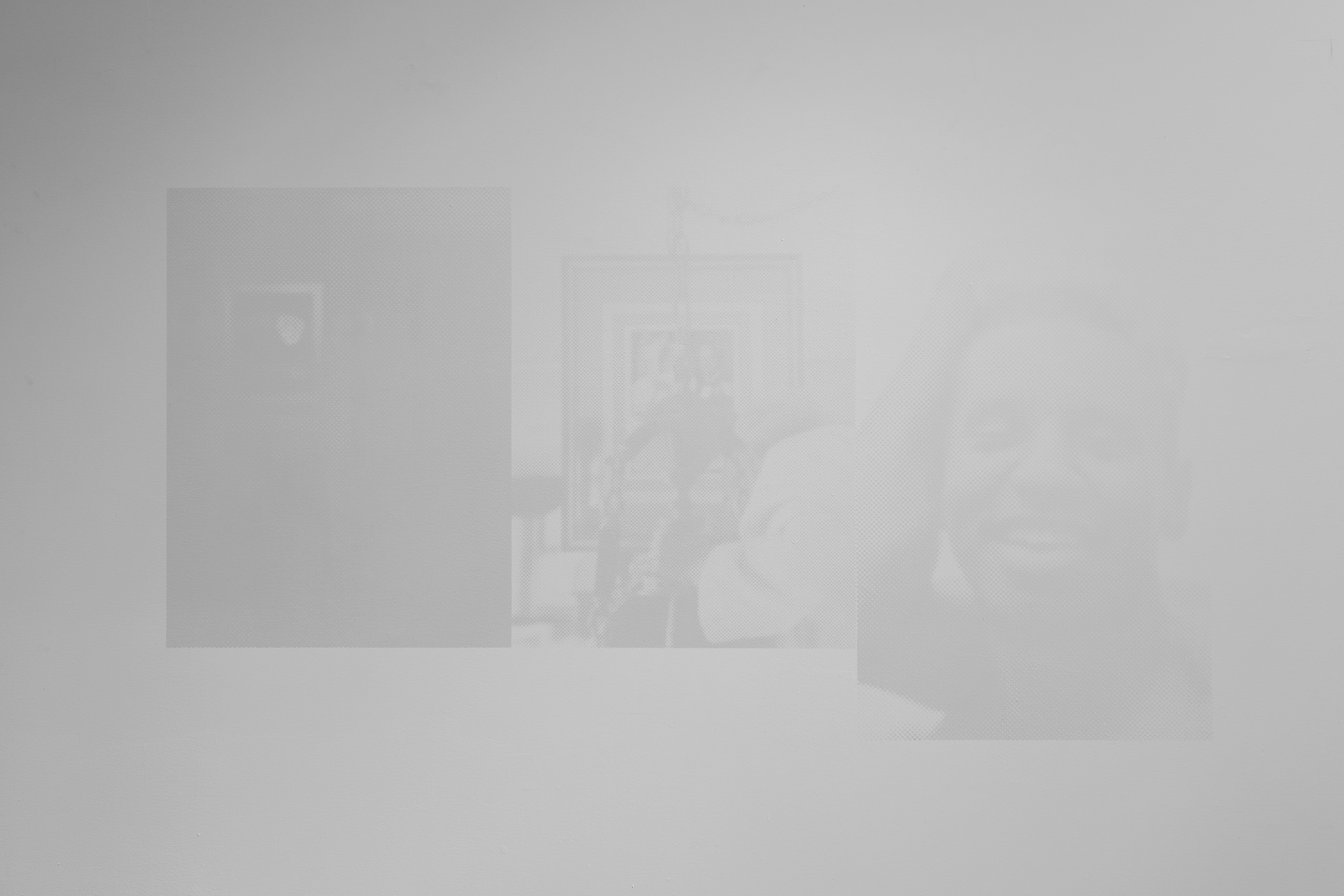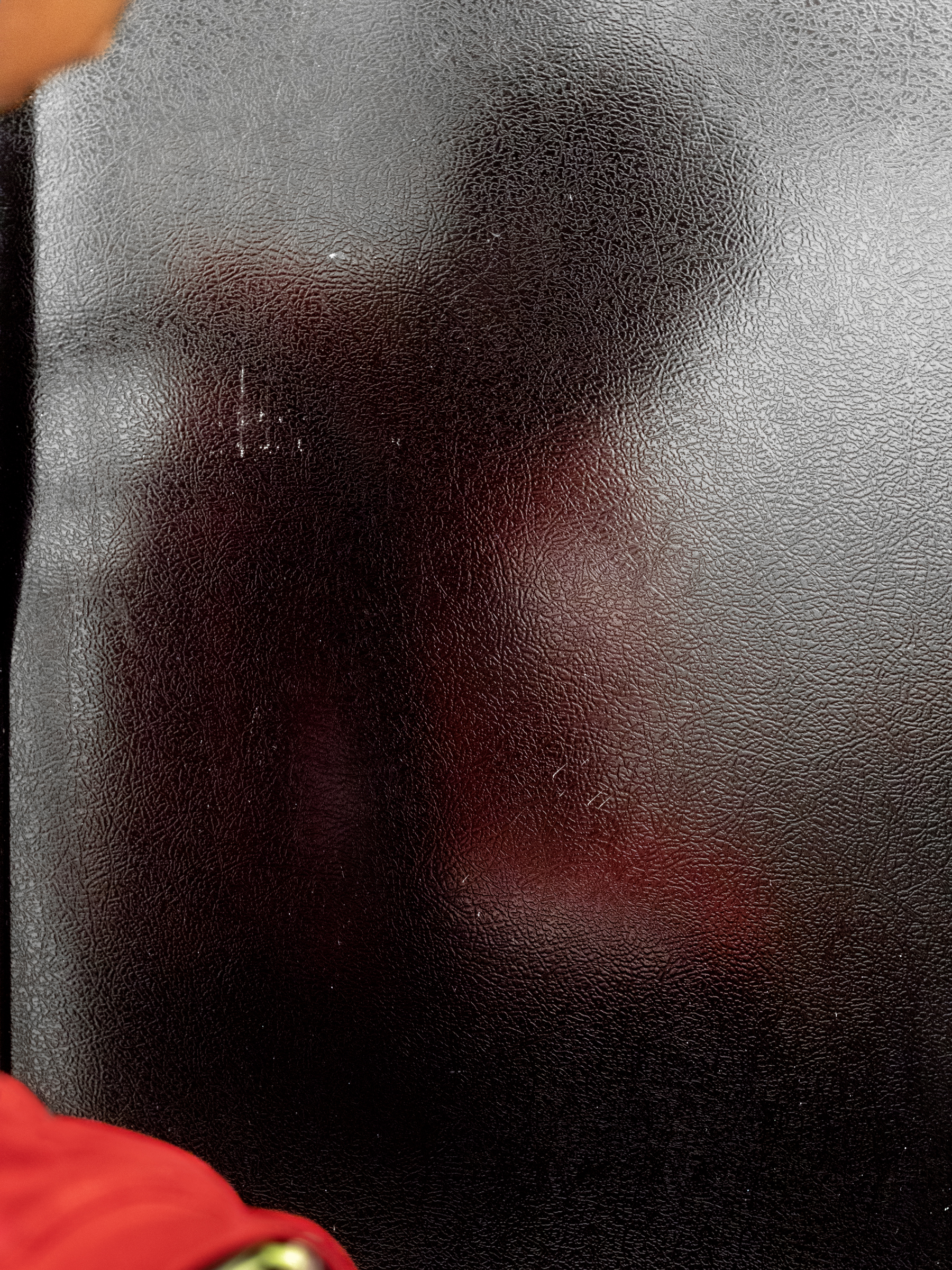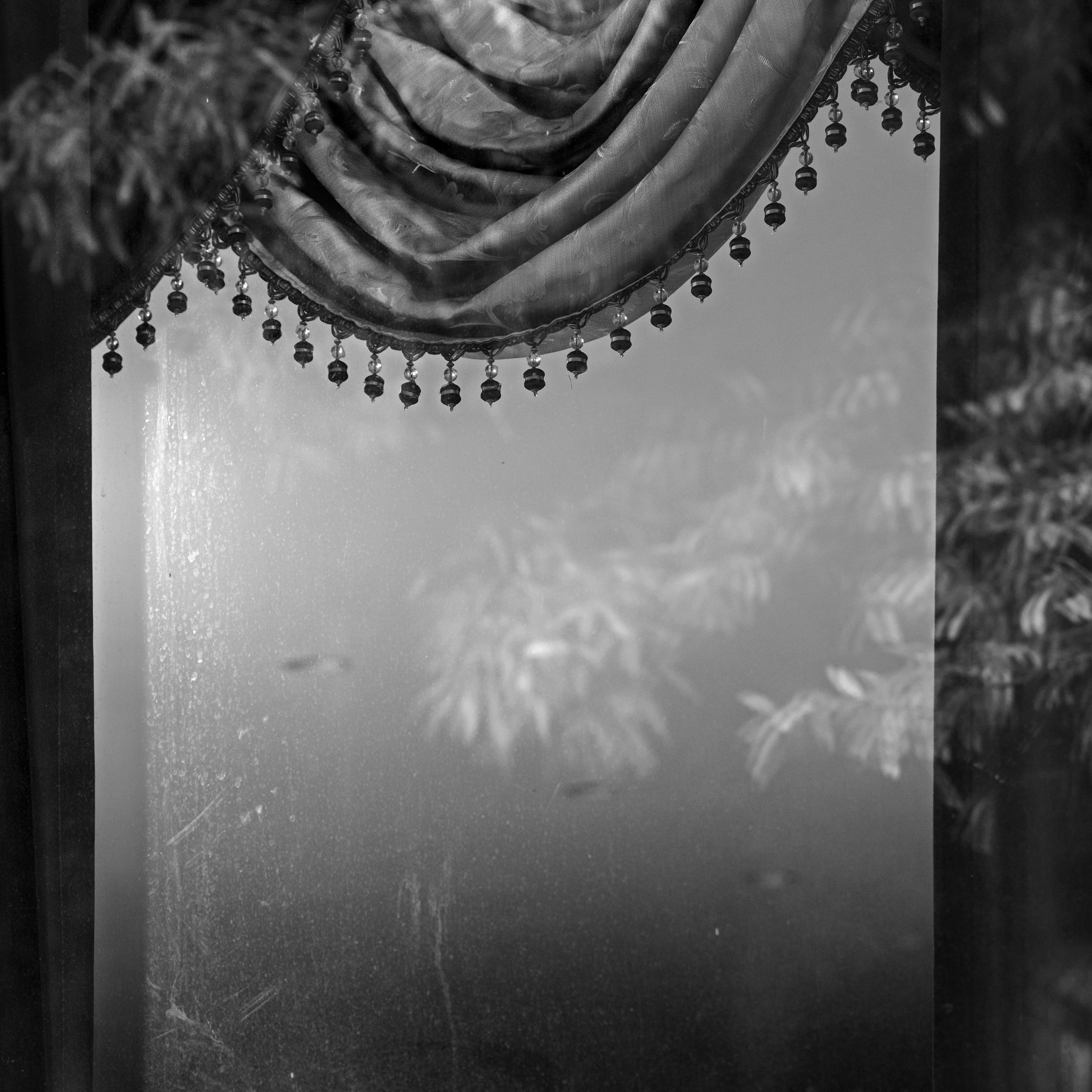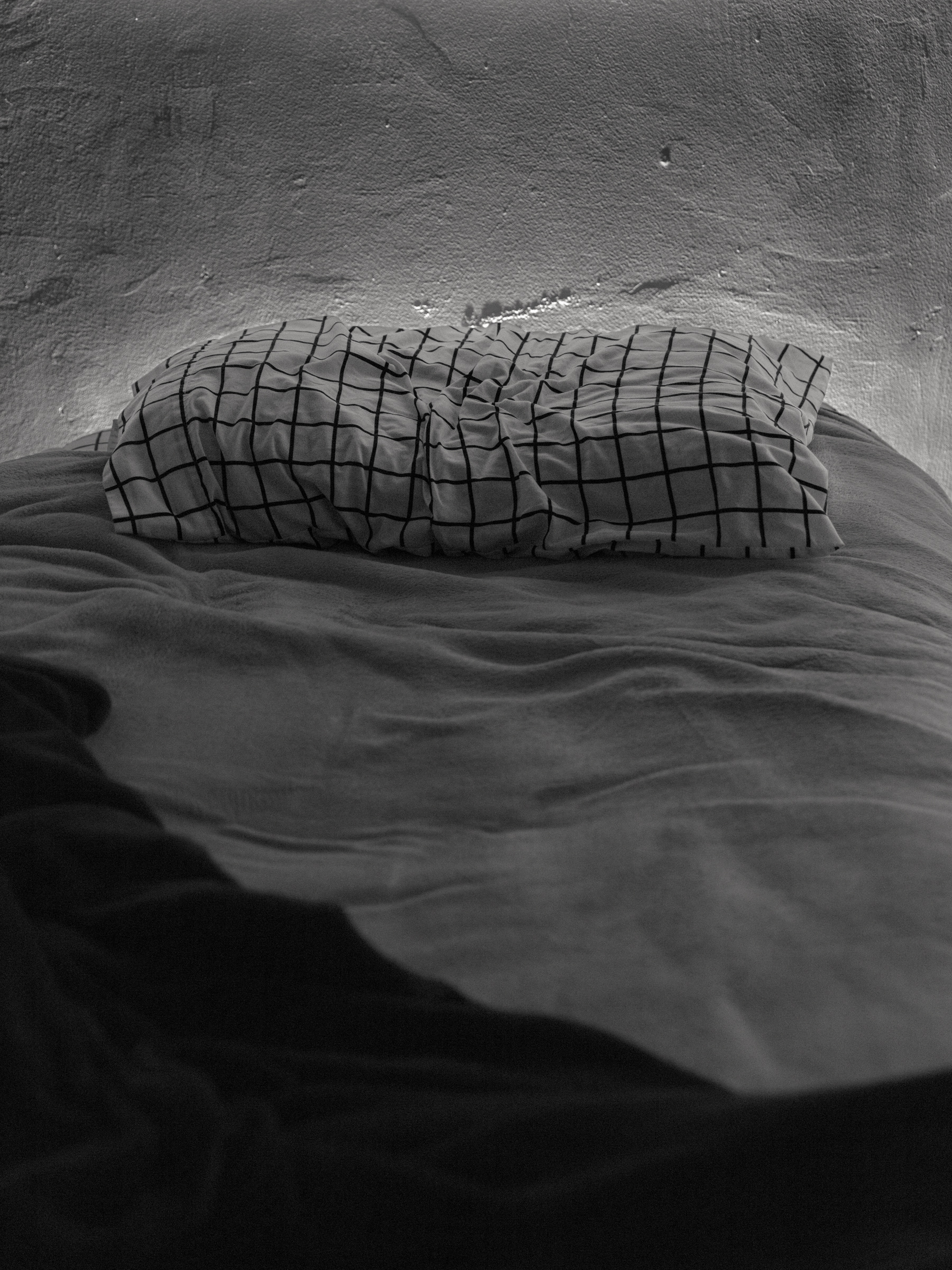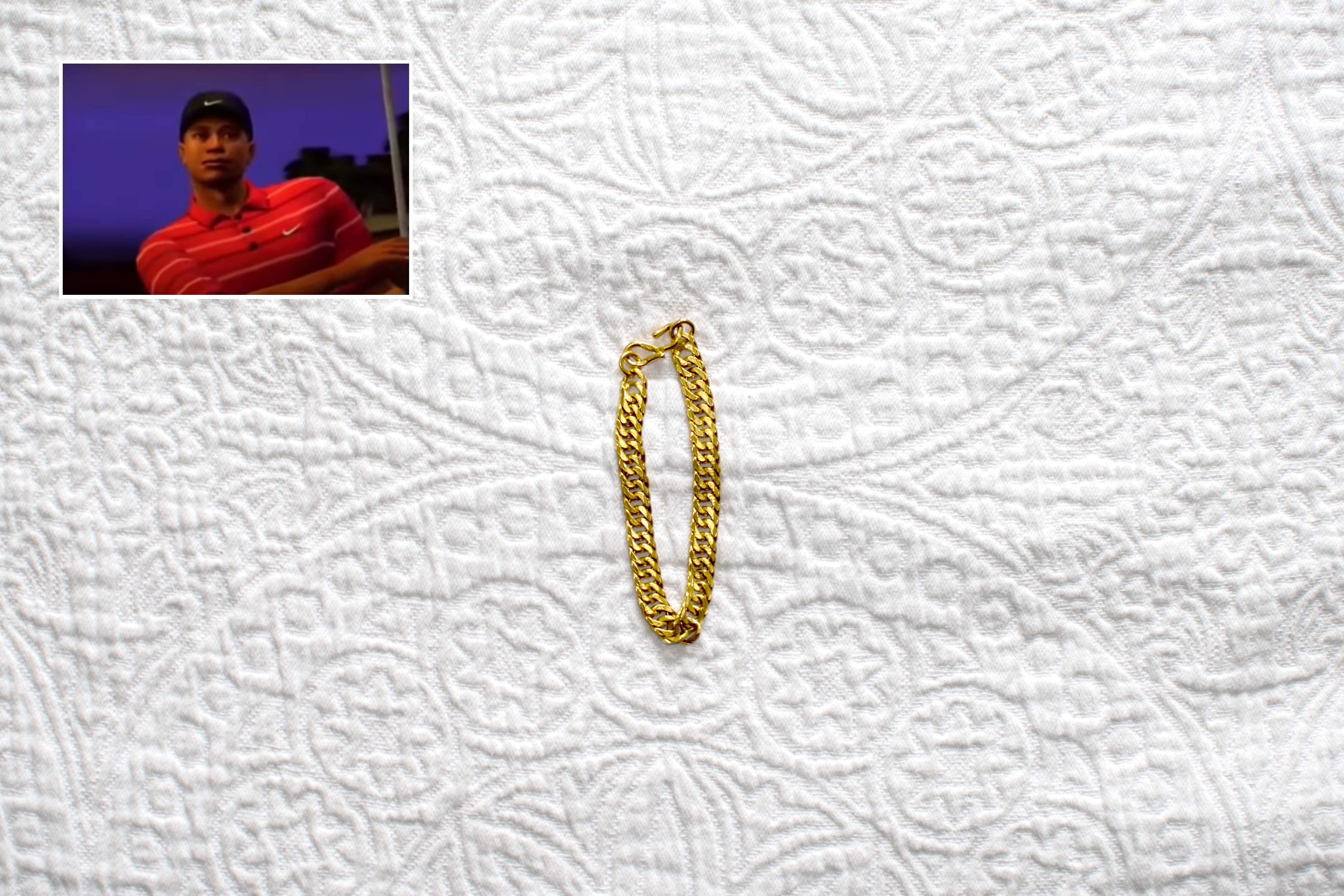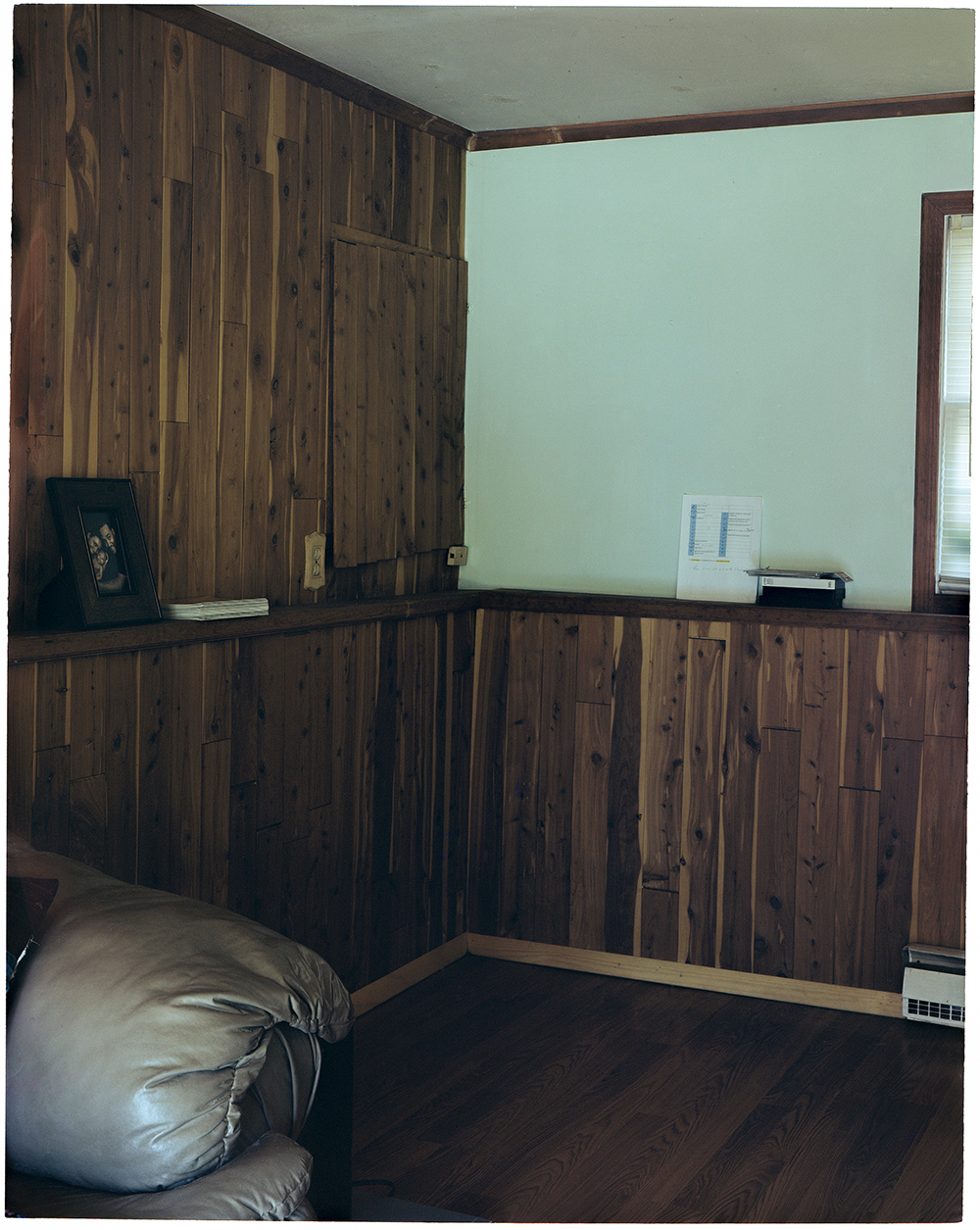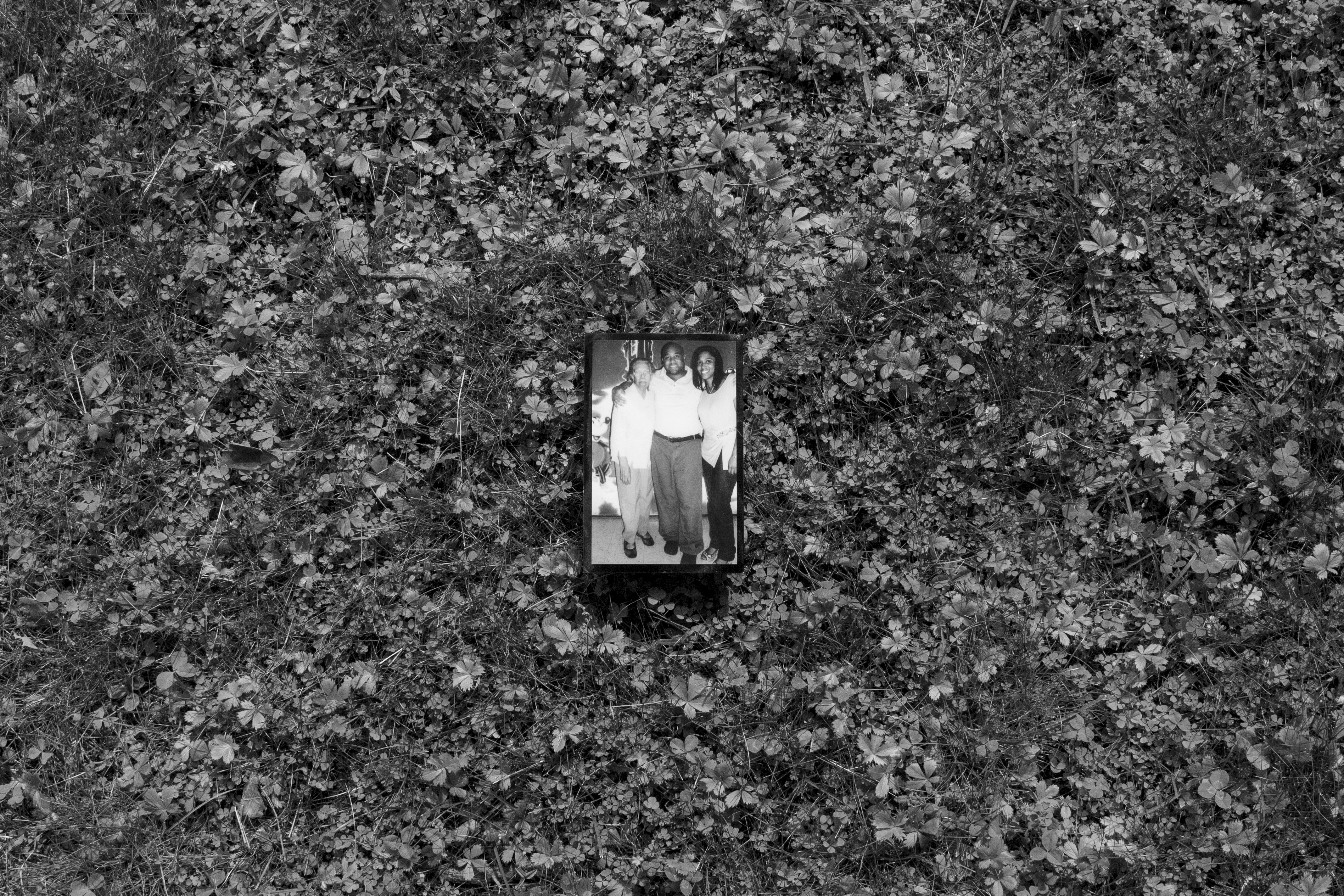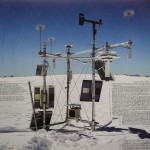Photographers on Photographers: Brandon Foushee in Conversation with Elliott Jerome Brown Jr.
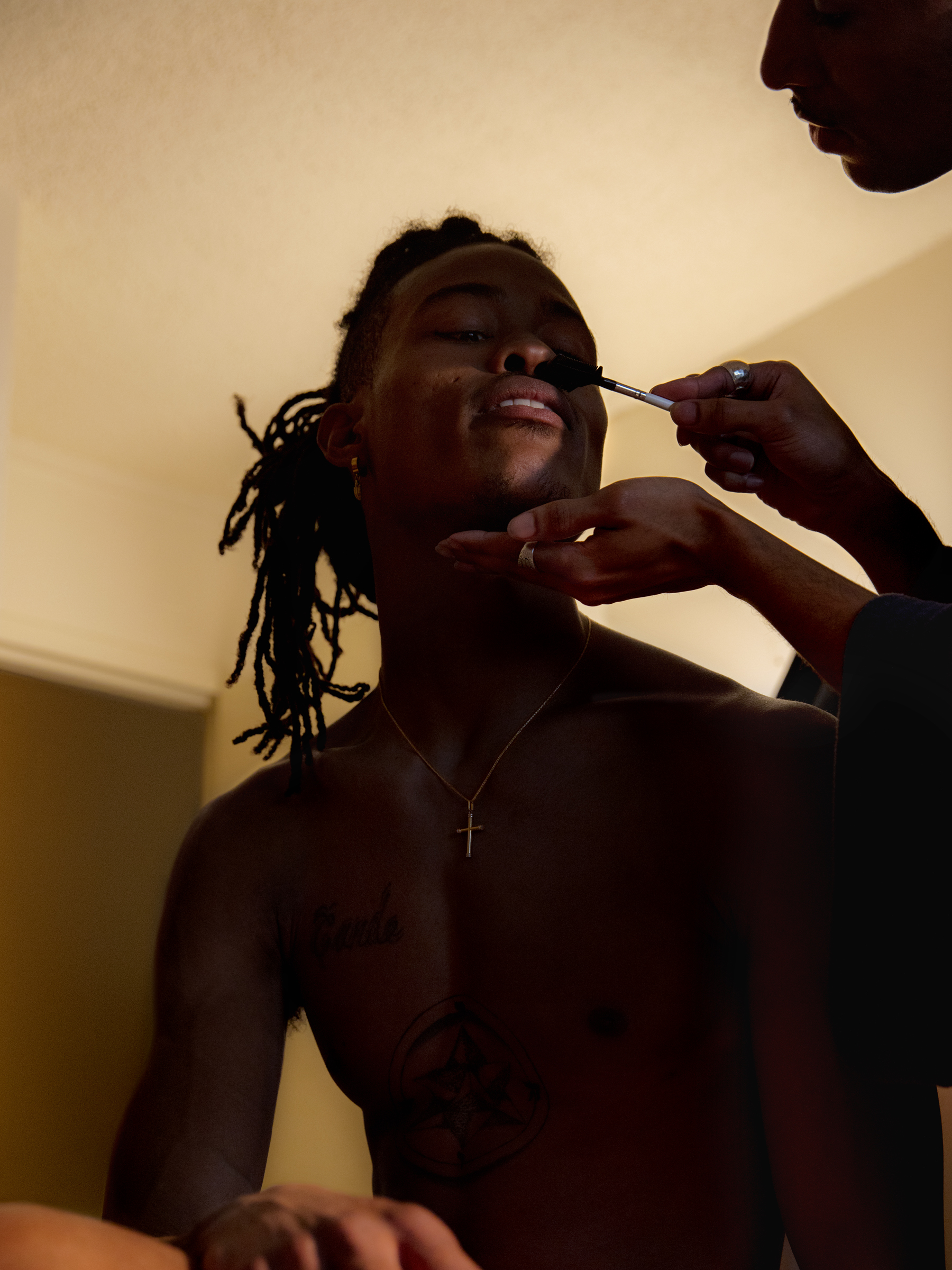
© Elliott Jerome Brown Jr., Breath tucks in and weighs the eyes closed. Beyond that callused layer lie a circular gradient of white, into yellow, into burnt orange and red. A euphoric entrance into day, and yet space becomes obscure and distant in the dark. Suddenly, in the aftermath of that quiet to-do of colors, my body is the only thing I know to be here. “Take your time,” you whisper., 2020
Elliott Jerome Brown Jr is an artist who uses photography to speak around the ideas of representation, ambiguity and privacy. When I first came in contact with Elliott’s work in 2019 at his exhibition a simple song at Baxter Street Camera Club, I was struck by his sensitivity to creating spaces of limbo. Elliott chooses to photograph close friends and acquaintances, usually showing them in ways that he describes as abstract portraits. Many of his works include ideas of tension and amorphous boundaries. Often, Elliott’s compositional elements dance around the edges of the frame leaving the viewer lingering and asking themselves questions about spatial awareness, presence and legibility. I became fascinated by the ways Elliott has decided to use the camera, building a coded yet poetic world of refractions, distance, and nonlinear memories.
Elliott Jerome Brown Jr. (born 1993, Baldwin, NY) is an artist using photography to explore representation through privacy and fiction. Occasionally the work turns away from standard archival prints to examine photography as a sculptural, redactive, and site-specific process. In addition to various group and solo exhibitions, he has completed residencies at Abrons Art Center in New York, St. Roch Community Church in New Orleans, and Skowhegan School of Painting and Sculpture in Maine. He is a 2022 NYSCA/NYFA Artist Fellow in Photography and received the Rema Hort Mann Foundation Emerging Artist Grant in 2019. Brown received his BFA in Photography from the Tisch School of the Arts, New York University. He is currently
based in Queens, New York.
Follow Elliott Jerome Brown Jr. on Instagram: @elliottjeromebrownjr
Brandon Foushee: Hi Elliott. How are you? How’s everything? Thank you for doing this. It’s always fun to chat about photography with you.
Elliott Jerome Brown Jr: I’m doing well. It’s been a kind of slow start to the day but glad we are able to make this happen.
BF: So I think the last time I saw you was at your exhibition opening in January at Nicelle Beauchene Gallery, which was super exciting to see because I was seeing way more sculptural aspects of the work. So to start, I was wondering if you’d be able to describe the series of photographs and then also speak a little bit about how you feel about the overall exhibition at this point in your artistic career.
EB: I’ll start by talking about the photographs that are framed on the wall. There are 10 framed photographs for the show and one that was in the side office space. That particular one wasn’t part of the show, it was from the 2019 exhibition I had with the same gallery. I had it up specifically to note the physical structural evolution of my framed work. The 2019 photos are framed with glass. The current works don’t have any glass on them, but they do have a laminate over top of them. And that decision was made to reduce the glare in the reflection. The work started to become darker. There’s less light available on them. And even with museum quality glass or that really expensive glass called Optium, I still was able to see a glare. I just didn’t want any barrier from the photograph and the viewer.
I’m always trying to reconcile what the purpose of a frame is outside of its use to put some work on the wall. You know like, how does it intervene in the work conceptually? I’ve noticed when people interact with photography, they often comment on how the work is framed. It’s just not as negligible a detail as folks might think. I would still like to find a way to work with the frame a little more intentionally, though I think the sculptural works do that.
The photographs themselves were born out of wanting to pursue a different emotional register in my work. So up to this point, I guess there’s a few steps within the evolution of the work itself. Once I stopped photographing myself while in college, I was just thinking of how to make images in a way that felt respectful, and where they didn’t feel manipulative or exploitative to one person’s biography. That’s kind of where I learned to value privacy. Or rather, learn that privacy is becoming more important to me in my work.
So then that led me into this space where I was thinking about blackness, you know, as a too available thing or queerness as a too available thing; specifically the trauma around the two identities. There becomes a certain expectation of work that’s made in that tradition and with those markers. Because of that, I wanted to work in a coded way.
BF: How do you think the coded aspects show up in your work?
EB: I was working more in domestic spaces, spaces that folks had a familiarity with; spaces that they were able to relate to, but not in a way that were explicit. They felt more like domestic codes where people picked up on it when they could, but as I continued to kind of work around with matters of privacy, the imagery began to enter into this more fictional space. Relatability was less of a concern for me.
Leaving coded markers for black and queer people to be able to relate to was not something I was deliberately seeking out. Even my relationship to blackness and queerness was not something that I was looking to have be explicitly related to.
I became much more interested in distance and interiority; specifically in how interiority separates us. So, yeah, maybe I’ll find a better way to put that going forward in the conversation but that is the top note of how I find these works to be. There’s a lot more violence in here. One of the images is more explicitly aggressive even though there’s no suggestion about its aggression. There’s a lot of steely in the show. And all of that was in favor of an emotional register that felt less desirable, and more distant for a lack of better words.
BF: I see. I’m excited that you brought up privacy because I was almost hesitant to use that word when looking at some of the works that you’ve made within the show. To me, it makes sense as to how you’re talking about keeping a private aspect of the work. In some ways, so private it can feel almost abstract in the sense that the coded aspects almost start to become abrasive through its lack of legibility. I’m wondering if you tend to describe the images with people in them as portraits? I am also curious about your process of photographing with people. I ask because it almost seems like the environment that the people are in is a familiar environment, but maybe not necessarily their environment. I feel as though there might be an illusion as to what each person is about, but like not necessarily factual in describing them totally.
EB: Yeah. In one sense, I would continue to refer to them as portraits. Usually when I’m having to kind of give an elevator pitch of what I make I will usually refer to them as abstract portraits. To that end, I’m still interested in representation. I’m still interested in individuals but I find that this more ambiguous way of working makes for a more capacious representation. It of course makes for something more amorphous and something that’s a little less easy to contain. Within representation, I’m looking for what about us is difficult to represent or what is not perceptible in terms of representation? So yeah, to that end I still consider them portraits because of its investment in individuals. None of the work is biographical in terms of who is featured in the photo. I mean…maybe. But the biography is in suspense. I find that I’m more so inviting people to act things out. So most of the things that I make now lean towards improvisation.
BF: That’s enlightening to hear because looking at this last show made me think a lot about fine tuning. There is this spatial sensitivity I kept seeing in the work. What I mean by that is your awareness to the audience and understanding how much power is withheld from the audience. It also looks like you really pay close attention to how much space an individual within the image might be taking. While photographing, are these ideas in your head? When I went to the gallery opening, that phrase “spatial sensitivity” stuck with me while looking and moving through the work.
EB: When I have found a photograph that works for me, it’s usually an image that I had to kind of wrestle with in terms of its comprehension. I’m often going for the thing that is in the periphery, evades spectacle, or a straightforward answer. It’s a way to kind of push myself around what might be available to me, outside of the immediate. So that’s often how I know when a photograph works. Though with this show there’s one image that I actually wasn’t going to put in, because I didn’t think it followed the emotional register I was putting forth.
BF: Which image was that?
EB: It was the image of someone grooming another person’s mustache. That particular image was the first photograph that I made in 2020. And I was thinking about how one, I wanted to make more erotic images. And two, I wanted to make images that didn’t rely on people’s faces not being present in order to communicate a sense of discretion. The use of shadow was becoming much more important to me. There’s a lot of details in that photograph that are tucked away into the shadows. And ultimately, those details can be caught if you are looking to grasp them but yeah, that was a way for me to be able to say to myself, alright, I don’t want to just rely on these really frustrating images to help me along with my goal. For my larger artistic aims, let me see if I can work with somebody’s likeness, with their actual face. That can help me too.
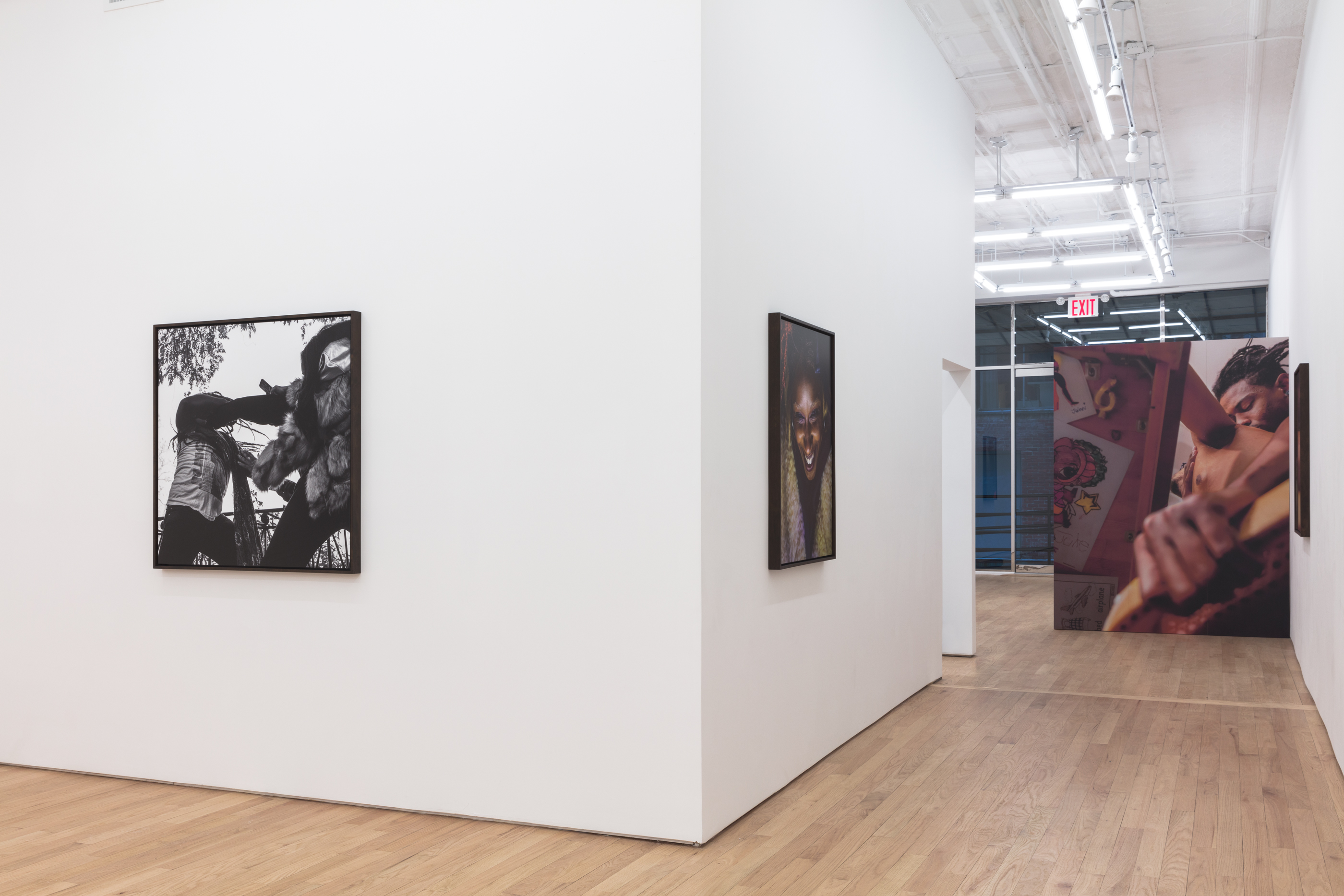
© Elliott Jerome Brown Jr., Installation View of Solo Exhibition at Nicelle Beauchene Gallery, January 2022 – February 2022
BF: I think as a viewer, that helps me a lot to engage deeper with the work because I felt like I started to notice more of those darker tones and a push towards how rich the blacks can carry a photograph. Lately I’ve been finding that I’m very much a person that’s learned or felt like I was able to control light with my photography best by prioritizing the shadows and focusing on what the blacks are doing. Even in the articles and writings I read, I find myself revisiting phrases and words that use photographic diction in contexts outside of photography. Right now, those are things that help me make my work.
EB: Can you say more about that?
BF: Yeah. One of my favorite photographers is Deana Lawson and in some lectures and artist talks I found she sometimes speaks upon those notes, relating the magic of light to photography in a scientific way. I resonate with that notion as it gave me a new lens to engage with her work. I enjoy taking fragments of sentences of things I might have read or heard and focus on what the shadows and the dark tones are actually doing. Sometimes, the beauty of language operates in that way for me which then gives me a new way of working. When people talk about my work, sometimes there’s a beauty in their words and I’m like whoa… this is something that can help me give a new meaning to something visual.
When you showed this image on Instagram, a while back I was like, Well, okay the blacks are really jarring to me, or at least feel a little bit more coarse in comparison to your previous works. For me, the stark blacks deepened the compositional space. That was really intriguing. It made my eye rotate to each of the forms around both figures in a spiraling motion. I thought to myself, what does it mean to have a work deeply set with motion without even clearly seeing that people are within the frame? I mean, the people are depicted of course, but not in an obvious way. In part, that work made me grapple with identifying what exactly was happening in the frame. I’m curious as to how you feel about this picture in general. How might you describe the ways in which the blacks are working within your new pictures?
EB: For me, this photograph was one of the most important to have in the show. Because it was more explicitly, like I mentioned earlier, aggressive. And, though I think based on how folks have read this photograph, I’m not sure that everyone registers it as a fight. I’m not sure everybody will, but it was important to me to include because it is a fight. And it’s one that I orchestrated where I asked the person on the left to be in the photograph because of their hair at the time. They had these long braids and I thought if I’m going to communicate a fight I need some kind of material like hair that will indicate an energy or a movement is taking place. And then the other two people are friends of theirs, who they felt comfortable with. All of them are self styled like with a little bit of my direction.
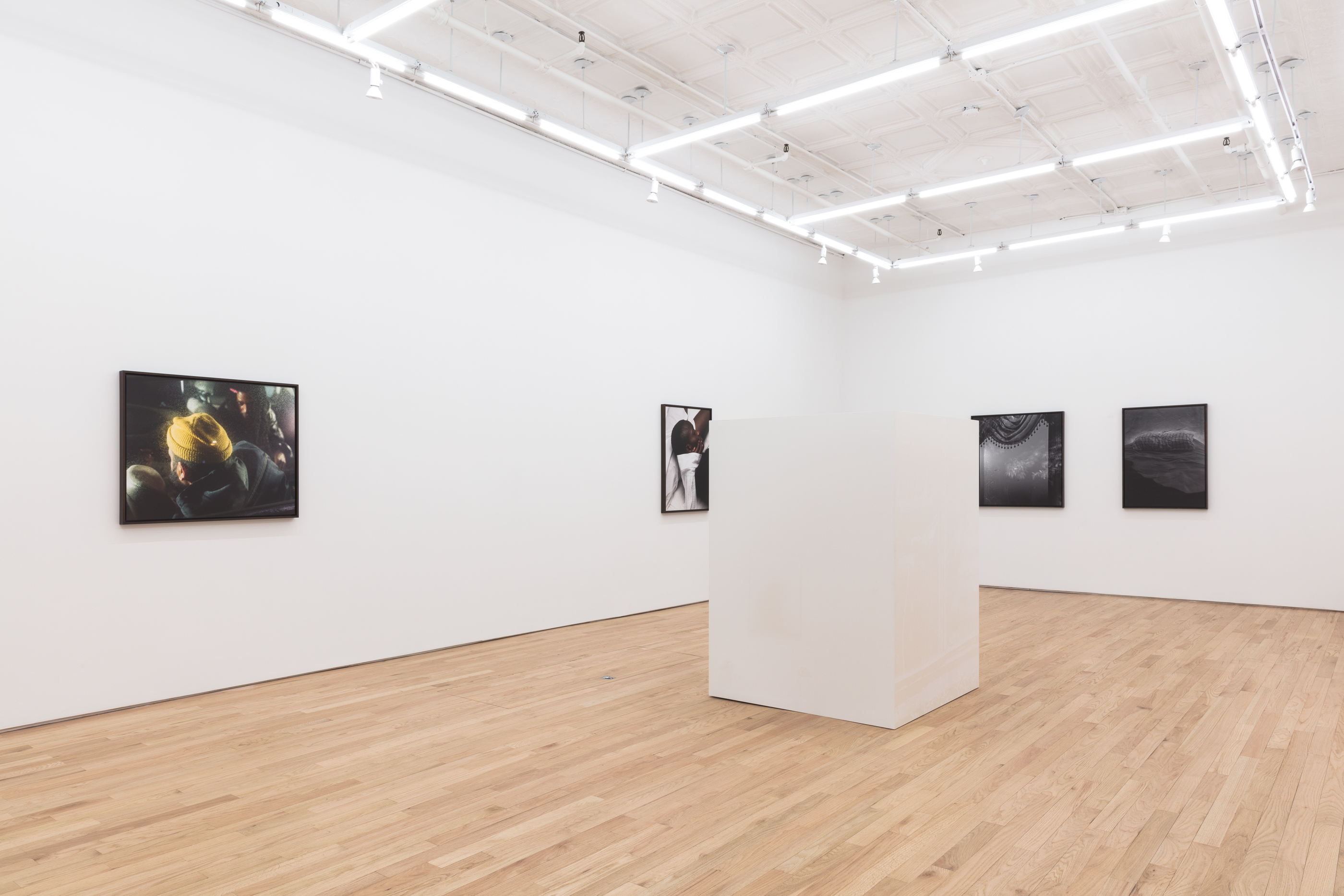
© Elliott Jerome Brown Jr., Installation View of Solo Exhibition at Nicelle Beauchene Gallery, January 2022 – February 2022
EB: Most of the photographs throughout the show are not using added light with the exception of four photographs; two of those four were made with flashlight lights, which is not a light that I’m used to using. With that I think that the blacks and the contrast here are appearing differently from my previous works. Because I’m allowing myself to work with what’s available. And that is for me to focus more on composition and less about light. Right? Like how can I get something good with what is here?
This image I think, was a bit of a risk. And all of its elements are not perceptible. So much so that there are three people in the photograph. Most people are not aware that there are three people here.
BF: I was not aware, haha.
EB: Haha. I’m okay with that because I think that kind of speaks to what is happening inside of my structural works, where there are these imperceptible details that are there whether or not you pick up on it, but if you have to kind of linger and spend some kind of time with it then it will come to you. I think at some point that happened to me in the fight photograph when I realized that there are six arms in the photo. Haha.
I also think that one may be one of my best active photos too. Like they really got into it. The fight felt believable. People were watching us as soon as we were doing this. I’m sure that was because it’s weird to see people fighting in public and somebody coming in to photograph that close. Haha.
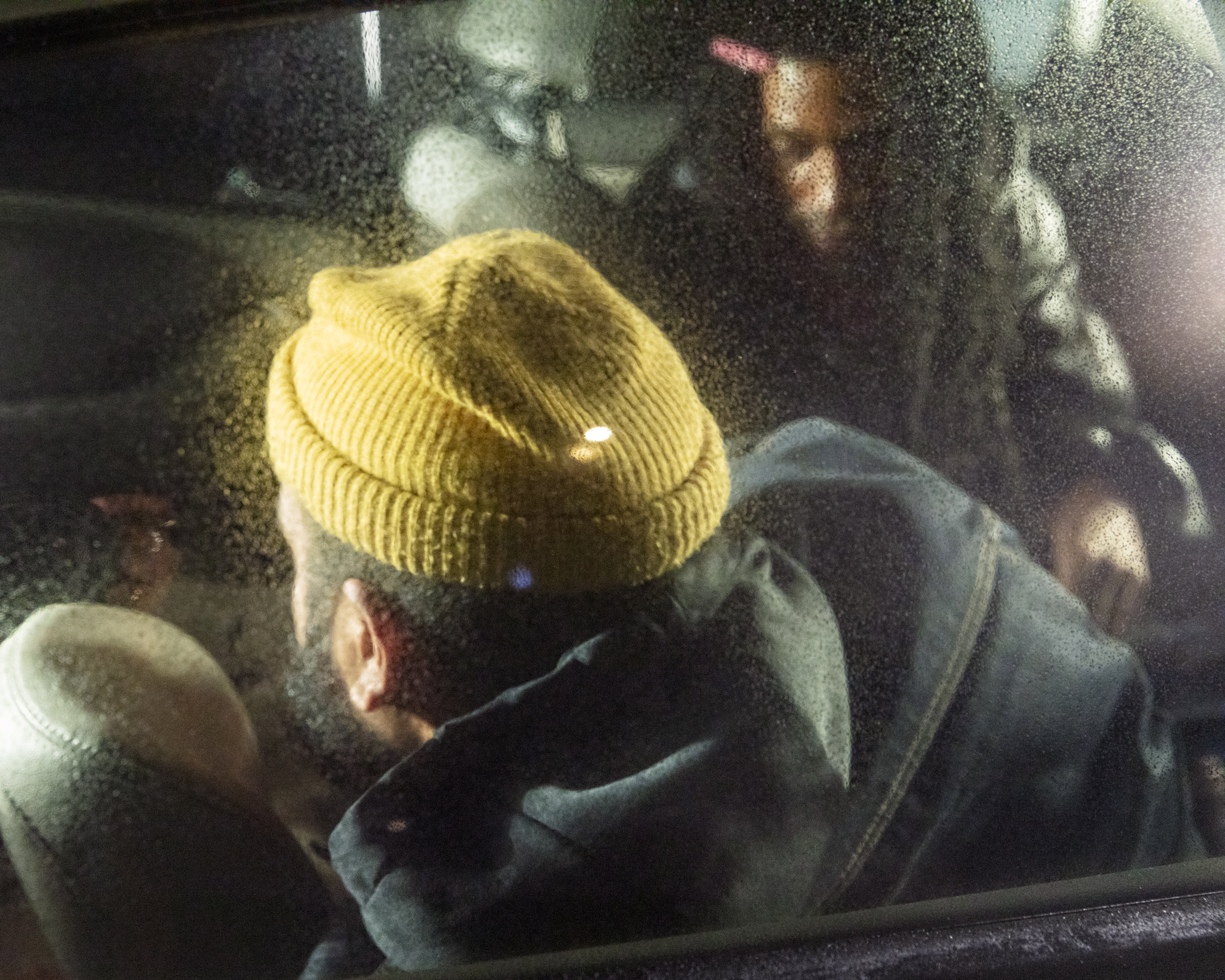
© Elliott Jerome Brown Jr., What was it you said about mirrors? Wonderful and overcome? Passive, dumbfounded?, 2020
BF: Haha. I’m glad that you also brought up the reference towards the sculptural aspects within your work, because I’m also curious as to you making more of those works. I’m really excited to see them show up more. I’ve been dabbling in making photo objects and using a photo transfer process that allows me to print onto wood which to me feels freeing. What made you first decide to bring more of the sculptural aspects into your work? During my time in school, I had a class that was specifically tailored to making photo objects and theorizing what it means to show
images outside of frames.
EB: I’ve always thought structurally within the presentation of photography. That idea of having a frame be positioned and noticing the frame’s interaction conceptually has been important to me. Since the first time I exhibited something, those kinds of questions just kept coming to mind. So, yeah when somebody has asked me to be in a show I’m gonna print it. What am I going to print it on? Why would I print it on this paper instead of this? If I frame it, why this frame over that frame? So I just kept making a why of every aspect of the process.
Also, objects have a timeless quality too. I don’t mean timeless as in like you have a good pair of jeans, but timeless as in they continue to be animated. There is something about a two dimensional object that feels like it just kind of stays there. It stays stagnant.
With this particular work, the image that’s printed on vinyl on the back of it, I knew that I wanted the fist to feel like a weight or an anchor somehow on the floor. Even still, I think with this iteration, I still didn’t quite arrive at how I wanted this fist to be experienced, but I knew that if it was going to hold that type of weight, I would need it to be a fairly large photograph. Immediately I was like, Alright, I think 8 feet is like a good size for it to be. Oftentimes when I’m working structurally, it’ll just be that I don’t really have a lot of steps in between ideas. So when I said that this would be 8 feet, I had already been thinking about working with walls themselves as a way to solve the “I don’t want to frame my work” problem.
BF: Ah, I see.
EB: I would think to myself, oh, maybe the wall could be the work itself. And I kept thinking like, Alright, we have 8 feet which is how big the photograph would be which is about wall sized. Let’s see what else is happening. I then was thinking about the cross section of the walls separately because that would be a nice place to think about interiority and in a very didactic way. So all of those three things kind of congealed to make that piece.
BF: The placement of the piece in the space is what pulled it together for me since you have to physically move around it as you enter the gallery and exit the gallery, getting different images on each side of the work. To me, that felt like a nice starting and ending point.
One of my last questions I wanted to talk about was the white cube in the middle of the exhibition. I know at Miriam gallery, you used a similar technique for the work there. Correct me if I am wrong, but I believe you screen printed your images directly to the wall.
EB: Yeah, so when I made that work at Miriam Gallery, that was the second time that I had screen printed directly onto a wall. The first time was in New Orleans Museum of Art. We used screen print ink but the ink was slightly darker than the wall color itself, which was like this kind of grayish green color. Whereas for the Miriam Gallery show, that’s when I had been introduced to this white pearlescent ink that is essentially white on white but because of the pearlescent quality, it has a bit of gray. It gives this shimmery quality which then comes with the benefit of rendering the ink in and out of visibility when moving around it. That is exactly what was happening at the Miriam Gallery show. When I think about that show, that work really appeared like a stain. At points it was totally imperceptible. Folks would come into the show looking for my work and not realize that they were in the room with it the whole time.
This box was a way for me to literally objectify two installation processes that I had been working through, most of which were introduced in the New Orleans show. The screen printing process, I referred to as redacted portraiture and the recession is referred to as recess portraiture. So both of those in the New Orleans show were kind of iterative and ephemeral, and they were destroyed at the end of the show, either by being painted over or by throwing away the structure that made for the recession. But for the work you’re referring to, I wanted to literally objectify them. So that they wouldn’t be so temporal and that they could exist over time. And yet, again, this was another one of those things where I kept asking why and trying to think of what works to make up my solo show. I kept referring to these column-like structures that have various recessions in them. I unfortunately forget the artist’ name at the Baltimore Museum of Art who had a kind of work where you would look into a hole in the wall and it revealed
something on the other side of the room. I don’t remember how she did that. But I was thinking about that structure to adapt for my work. That also then made me think about how I could actually do the screen print technique on the sides of the box too. It gave me an opportunity to work with photographs that I would not ordinarily work with in a more opaque way. And I guess I
mean that both literally and metaphorically. But they’re often images that are more personal to me.
EB: They are images that resonate with some of the reasons why I started making images to begin with, which is just to show love to myself and the people who are part of my life. It’s a way for me to work with privacy in a public sense. It’s a way for me to work with distance. It’s a way for me to work with something being incomprehensive and intangible to the extent that you have to work to understand it. Again, most people did not recognize that there was something on this box when they came into the gallery. One person actually came into the show before the show had opened. And was like, why is this big box here in the center, the center of the gallery? Maybe they’re not finished installing it. And it wasn’t until they got around to the front and they saw this cut out that they then paid greater attention to the remainder of the box. And so those are the kinds of details I’m really interested in. Making that work was something that pushed me into an interest in space that I’m not sure I fully want to take up.
I’m interested in what is taken for granted in our experiences of space and yet still have an impact on our behavior. So this work is kind of the beginning of the work that I made for Art Basel as an extension of this.
BF: I think that is a perfect place to leave our conversation. Ending in new beginnings! Thank you again Elliott.
EB: Thank you for having me. This was a fun conversation.
Brandon Foushee is a photographer born and raised in Budd Lake, NJ who lives and works in Brooklyn, NY. Foushee has just obtained his BFA in the undergraduate Photography Program at the Pratt Institute. His work revolves around the ideas of blackness and the relationship between the camera, subject, and photographer. Foushee utilizes his personal experiences to talk about black normalcy as a way to provide a more nuanced perspective of blackness and its visuality. Foushee has recently exhibited in Brooklyn at the Pratt Institute, and online in Photo-Emphasis: Backtalk curated by Aaron Turner. His work is published in the inaugural edition of The Photographer’s Green Book Volume One. Foushee had also recently done two visiting artist lectures for the school of art at the University of Arkansas and was awarded the Gordon Parks Scholarship in both 2019 and 2020.
Follow Brandon Foushee on Instagram: @Fooshphotos
Posts on Lenscratch may not be reproduced without the permission of the Lenscratch staff and the photographer.
Recommended
-
Earth Week: Ian van Coller: Naturalists of the Long NowApril 22nd, 2024
-
Earth Month Photographers on Photographers: Tyler Green in Conversation with Megan JacobsApril 15th, 2024
-
Shari Yantra Marcacci: All My Heart is in EclipseApril 14th, 2024
-
Artists of Türkiye: Cansu YildiranMarch 29th, 2024
-
Broad Strokes III: Joan Haseltine: The Girl Who Escaped and Other StoriesMarch 9th, 2024

